The V-I characteristic of a silicon diode is shown in the Fig. Calculate the resistance of the diode at
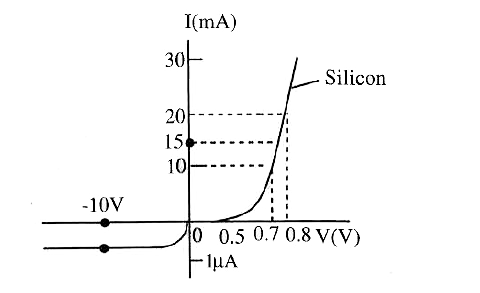 Solution in Telugu
Solution in Telugu
Considering the diode characteristics as a straight line between I = 10 mA to I = 20 mA passing through the origin, we can calculate the resistance using Ohm.s law.
From the curve, at I = 20 mA, V=0.8 V,
I= 10 mA, V=0.7 V
Topper's Solved these Questions
- SEMICONDUCTOR DEVICESBook:AAKASH SERIESChapter:SEMICONDUCTOR DEVICESExercise:EXERCISE -I (ENERGY BANDS AND CLASSIFICATION OF SOLIDS )
Explore 43 Videos
- SEMICONDUCTOR DEVICESBook:AAKASH SERIESChapter:SEMICONDUCTOR DEVICESExercise:EXERCISE -I (P-N JUNCTION DIODE)
Explore 35 Videos
- SEMICONDUCTOR DEVICESBook:AAKASH SERIESChapter:SEMICONDUCTOR DEVICESExercise:Problems (LEVEL-II)
Explore 7 Videos
- RAY OPTICSBook:AAKASH SERIESChapter:RAY OPTICSExercise:PROBLEMS ( LEVEL-II)
Explore 50 Videos
- UNITS AND MEASUREMENTBook:AAKASH SERIESChapter:UNITS AND MEASUREMENTExercise:PRACTICE EXERCISE
Explore 45 Videos
Similar Questions
Carbon, silicon and germanium have four valence electrons each. These are characterised by valence and conduction bands separated by energy band gap respectively equal to (Eg)c,(Eg)Si and (Eg)Ge .Which of the following statements is true ?
(a) (Eg)Si<(Eg)Ge<(Eg)C
(b) (Eg)C<(Eg)Ge>(Eg)Si
(c ) (Eg)C>(Eg)SI>(Eg)Ge
(d) (Eg)C=(Eg)Si=(Eg)Ge
View SolutionThe neutral region formed at P-n junction due to recombination of electrons and holes is
View SolutionA n-type silicon sample of width 4×10−3m, thickness 25×10−5m and length 6×10−2m carries a current of 4.8 mA when the voltage is applied across the length of the sample. If the free electron density is 1022m−3, then find how much time does it take for the electrons to travel the full length of the sample? Given that charge on an electron e=1.6×10−19C
View SolutionTwo plane mirrors are combined to each other such that one is in y-z plane and the other is in X-z plane. A ray of light travelling along a vector ˆi+ˆi+ˆk is incident on the first mirror. Find the unit vector in the direction of emergent ray after successive reflections through both the mirrors.
View SolutionThe ratio of S.I. unit of universal gravitational constant to C.G.S. unit is
View SolutionThe V-I characteristics of silicon diode is shown in Fig. Calculate the diode resistance in forward bias at V=+0.9V reverse bias V=-3.0V .
View SolutionThe V-I characteristics of a silicon diode is shown in the Fig. . Calculate the resistsnce of the diode at I_(D)=15mA and V_(D)=-10V .
View SolutionThe V-I characteristic of a silicon diode is shown in the Fig. Calculate the resistance of the diode at (a) I_(D) = 15 mA and (b) V_(D) = -10 V . .
View SolutionThe V-I characteristic of a silicon diode is shown in figure . The resistance of the diode at ID=15 mA is
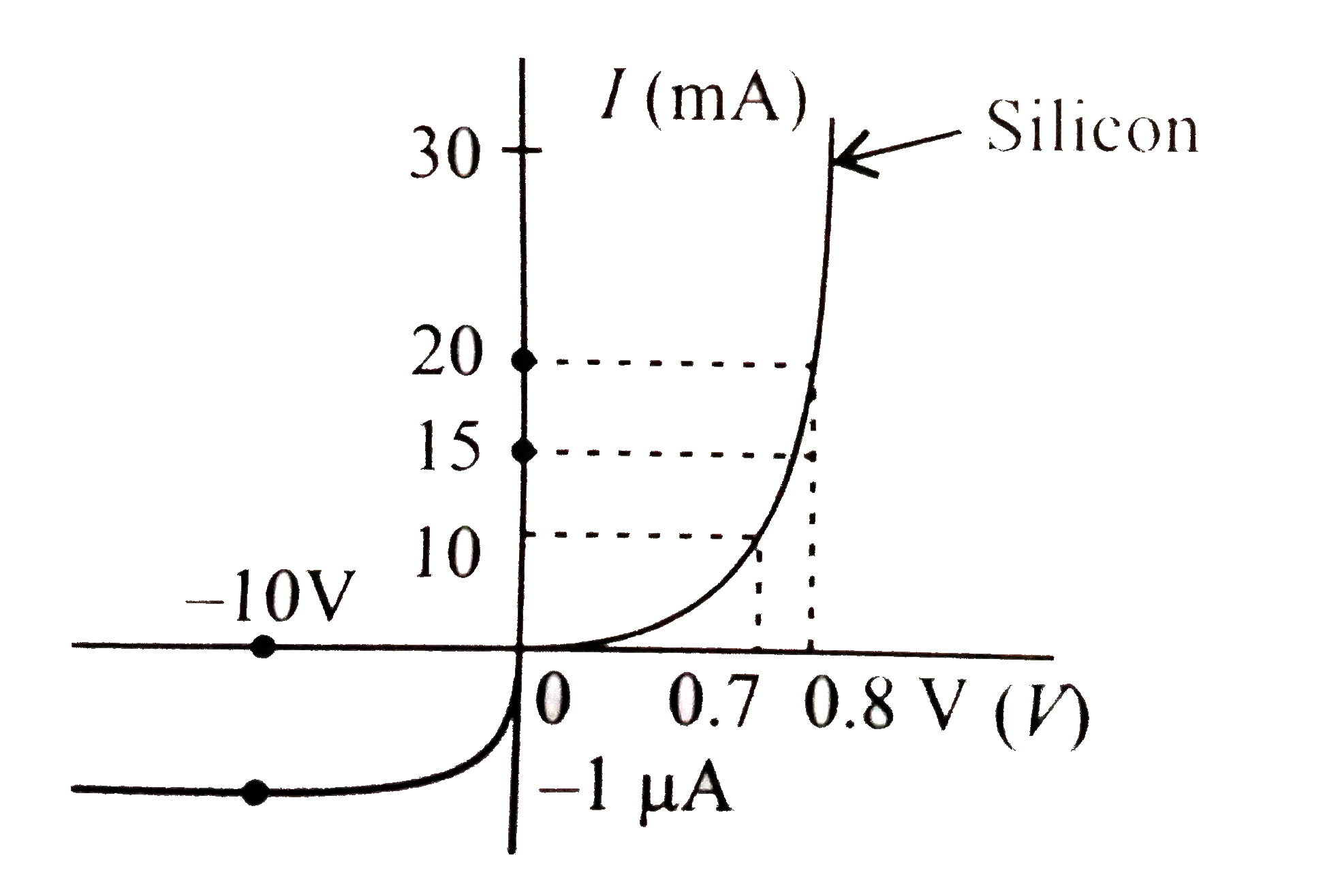
View Solutionकिसी सिलिकॉन डायोड का V−I अभिलाक्षणिक चित्र में दर्शाया गया है। डायोड का प्रतिरोध (a) ID=15mA तथा (b) VD=−10V पर परिकलित कीजिए।
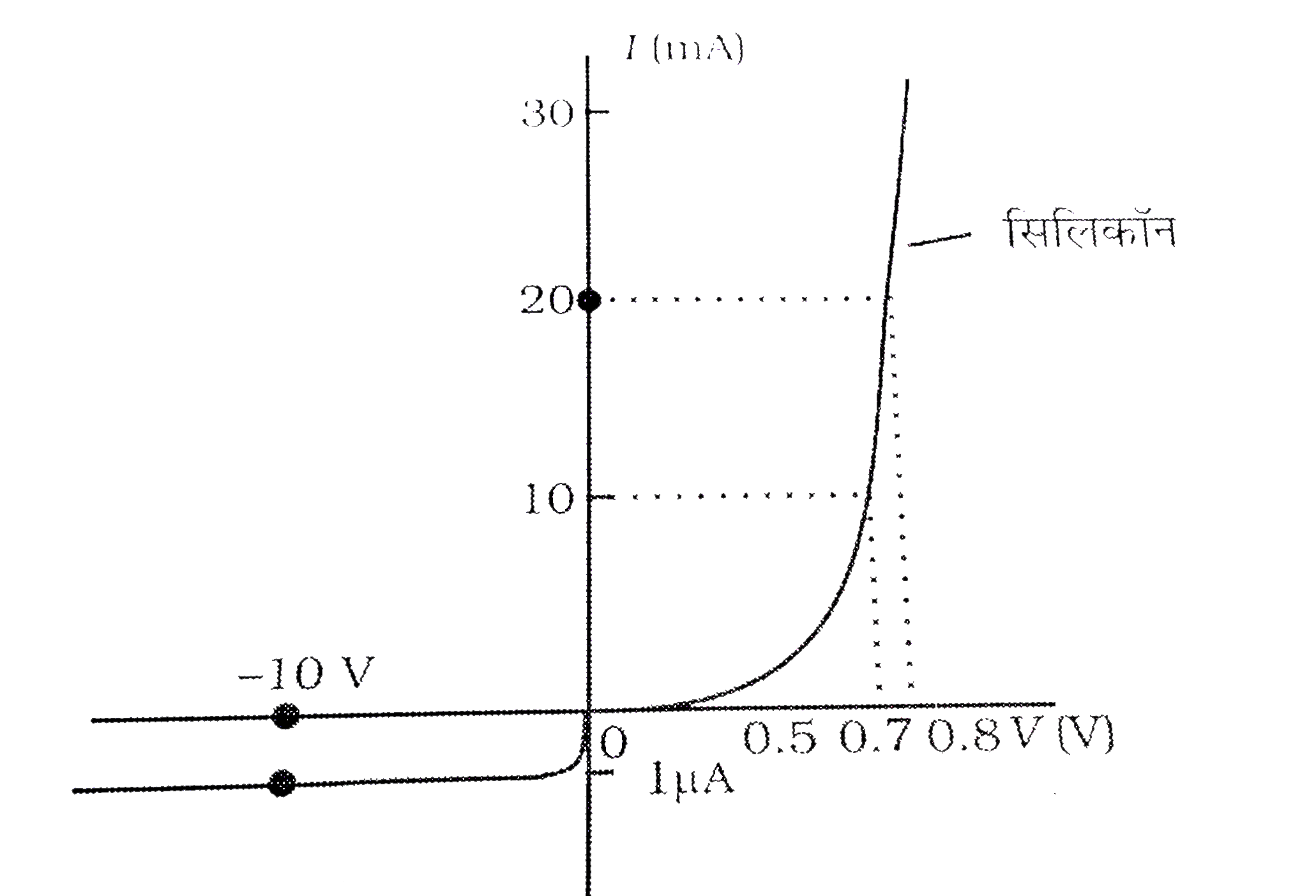
View Solutionसिलिकॉन डायोड के निम्न प्रेक्षणों से डायोड प्रतिरोध की गणना कीजिए
V = 0.8 V पर I= 20 mA तथा V = 0.7 V पर I = 10 mA.
View Solutionकिसी सिलिकॉन डायोड का V-I अभिलाक्षणिक चित्र में दर्शाया गया है| डायोड का प्रतिरोध (a) ID=15mA तथा (b) VD=−10V पर परिकलित कीजिए|
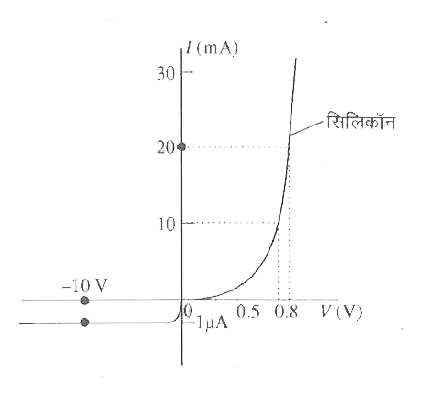
View SolutionThe V-I characteristic of a silicon diode is as show in the following calulate the resistance of the diode at (i) I_(D)=15 mA and (ii) V_(D)=10 V
View SolutionThe V-I characteristic of a silicon diode is shown in the figure . Calculate the resistance of the diode at (a) ID=15mA and (b) VD=−10V
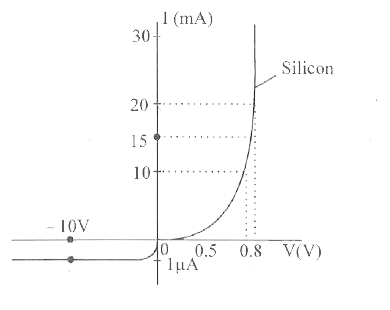
View SolutionThe V-I characteristic of a silicon diode is shown in the Fig. 14.17. Calculate the resistance of the diode at (a)ID=15 mA and (b) VB=−10V
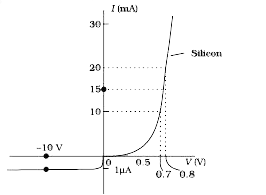
View Solution

